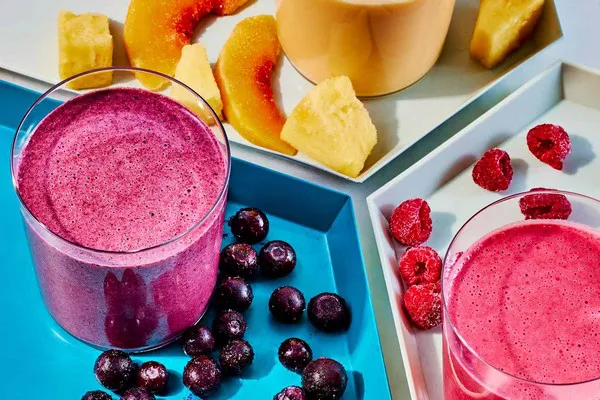Chocolate lovers often find themselves exploring the diverse world of cocoa-based treats, with terms like “100% cocoa” and “dark chocolate” frequently coming up. While these terms might seem interchangeable to some, they actually represent distinct categories within the chocolate spectrum. In this article, we’ll delve into the differences between 100% cocoa and dark chocolate, exploring their compositions, taste profiles, health benefits, and ideal usage scenarios. By the end, you’ll have a clearer understanding of what each term means and how to choose the best option for your taste preferences and health goals.
Understanding 100% Cocoa
100% cocoa, often referred to as unsweetened cocoa powder or baking cocoa, is a pure form of cocoa that contains no added sugars or milk solids. It’s derived from cocoa beans that have undergone a series of processes including fermentation, roasting, grinding, and pressing to separate the cocoa butter from the cocoa solids. The resulting cocoa powder is highly concentrated, with a deep, intense chocolate flavor and a slightly bitter taste.
Composition
- Cocoa Solids: 100%
- Added Sugars: 0%
- Milk Solids: 0%
Usage
Due to its intense flavor and lack of sweetness, 100% cocoa is not typically consumed on its own. Instead, it’s used as an ingredient in baking and cooking, where it can be combined with sugars, fats, and other ingredients to create a variety of chocolate-based treats. It’s also a popular choice for making hot cocoa drinks, where the bitterness of the cocoa powder is balanced out by the addition of milk and sweeteners.
Taste Profile
100% cocoa has a robust, earthy flavor with a hint of bitterness. It’s not for the faint of heart, as its intensity can be overwhelming for those who prefer sweeter chocolate varieties. However, for those who appreciate the bold, authentic taste of cocoa, 100% cocoa can be a delightful addition to their culinary repertoire.
Understanding Dark Chocolate
Dark chocolate, on the other hand, is a type of chocolate that contains cocoa solids, cocoa butter, and often some form of sweetener. Unlike 100% cocoa, dark chocolate is designed to be consumed as a snack or treat, with a balance of sweetness and bitterness that appeals to a wider audience.
Composition
- Cocoa Solids: Typically ranges from 35% to 90%, with higher percentages indicating a more intense chocolate flavor.
- Cocoa Butter: Naturally present in cocoa beans, it adds smoothness and mouthfeel to the chocolate.
- Added Sugars: Ranges from minimal to moderate, depending on the brand and type of dark chocolate.
- Milk Solids: Generally absent, but some dark chocolate varieties may contain a small percentage of milk powder for added creaminess.
Usage
Dark chocolate is versatile and can be enjoyed in a variety of ways. It can be eaten on its own as a snack, melted down for baking or cooking, or used as an ingredient in various recipes. Its rich, complex flavor makes it a popular choice for chocolate enthusiasts who appreciate the balance of sweetness and bitterness.
Taste Profile
Dark chocolate’s taste profile can vary widely depending on the cocoa percentage. Lower cocoa percentages tend to have a sweeter, more approachable flavor, while higher cocoa percentages offer a more intense, bitter experience. Dark chocolate often has notes of fruit, nuts, and caramel, with a smooth, creamy texture provided by the cocoa butter.
Comparing 100% Cocoa and Dark Chocolate
Now that we’ve explored the basics of 100% cocoa and dark chocolate, let’s compare them in terms of their key characteristics.
Flavor
- 100% Cocoa: Intensely bitter and earthy, with a robust chocolate flavor.
- Dark Chocolate: Ranges from mild to intense, with a balance of sweetness and bitterness. Higher cocoa percentages offer a more intense flavor profile.
Texture
100% Cocoa: Dry and powdery in its raw form, but can be transformed into a smooth, creamy liquid when mixed with milk and sweeteners.
Dark Chocolate: Smooth and creamy, with a melt-in-your-mouth texture that makes it enjoyable to eat on its own.
Usage
100% Cocoa: Primarily used as an ingredient in baking and cooking, or for making hot cocoa drinks.
Dark Chocolate: Can be eaten on its own, used in baking and cooking, or incorporated into various recipes.
Health Benefits: Both 100% cocoa and dark chocolate offer potential health benefits, thanks to the antioxidants and other nutrients present in cocoa beans. However, the specific benefits can vary depending on the cocoa percentage and processing methods.
100% Cocoa: High in antioxidants, fiber, and minerals. Its low sugar content makes it a healthier choice for those watching their sugar intake.
Dark Chocolate: Also rich in antioxidants, particularly flavonoids, which have been linked to heart health benefits. Higher cocoa percentages tend to have more health benefits, but even moderate cocoa percentages can offer some nutritional value.
Choosing the Right Option
When deciding between 100% cocoa and dark chocolate, consider your taste preferences, usage needs, and health goals.
For Baking and Cooking: If you’re looking for a pure, intense cocoa flavor for your baking and cooking projects, 100% cocoa is a great choice. It allows you to control the sweetness and create custom chocolate-based treats.
For Snacking and Drinking: If you prefer to enjoy chocolate on its own or in drinks, dark chocolate offers a range of cocoa percentages to suit your taste. Look for higher cocoa percentages for a more intense flavor profile and potential health benefits.
For Health Concerns: If you’re watching your sugar intake or looking for a healthier chocolate option, 100% cocoa is lower in sugars and offers a range of nutrients. Dark chocolate, particularly higher cocoa percentages, also offers health benefits but may contain added sugars.
Conclusion
In summary, 100% cocoa and dark chocolate are distinct categories within the chocolate world, each offering unique flavors, textures, and uses. While 100% cocoa is a pure, intense form of cocoa powder primarily used in baking and cooking, dark chocolate is a versatile, sweetened chocolate variety that can be enjoyed on its own or in various recipes. By understanding the differences between these two options, you can make informed choices that align with your taste preferences, usage needs, and health goals. Whether you’re a chocolate enthusiast or a home baker, there’s a cocoa-based treat that’s perfect for you.
Related Topics:



























